People's food preferences have changed over the millennia, but the truly valuable food has remained to this day. In most cases, these food products are natural, they are both food and medicine for a number of diseases. One of these priceless natural gifts is the lentil plant. It is one of the foods, that comes in different varieties and colors - yellow, pink, green, red and even black. Nutritionally the different varieties of lentils are very similar.
Brown and red lentils are the most common, which is why interest is focused on these varieties. Although red lentils are more popular in the Arab world, they are also gaining ground in the European diet, because of its benefits, which are good to know.
The place of the red lentil variety in the history of this culture
The lentil plant grows in round or oval shaped pods with 1-2 seeds inside. It belongs to the Legume family and originates from the central parts of Asia. It has a thousand-year history, it is believed that the age of the culture is more than 8 thousand years.
In those distant times, lentils have been defined as a vitally important crop, because of the high nutritional value they possess and the wealth of nutrients they contain. They are low in fat, high in protein, folate, phosphorus, fiber and iron. They are easy to cook and do not require soaking and the beneficial properties of this crop as a food product surpass those of beans.
Lentils have been called the poor man's meat, because of their affordability and protein content, making them a staple on vegetarian menus today.
The red variety of lentils takes center stage among other types in Arabic cuisine, although it is already quite popular in European as well. It is a national food in India, China, Turkey and Russia. When subjected to heat treatment, this variety changes its color to golden yellow.
Description of red lentils
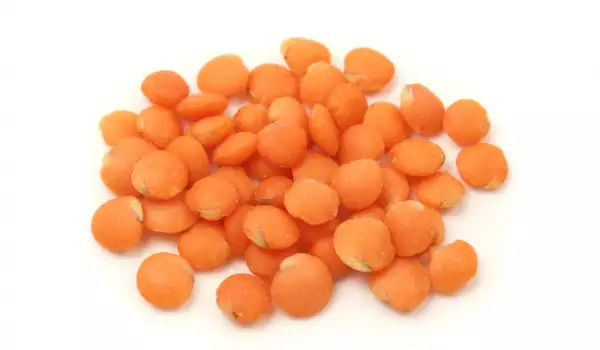
Globally, this variety is more commonly grown than brown lentils. The variety was first cultivated on the territory of today's Turkey and Syria. This happened about 7 thousand years ago. This is why the variety is widespread in Oriental cuisine. They use it most often for lentil cream soups, pates and lentil curries.
The scales of red lentils are brown. However, before it is sold on the market, the scales are removed. This leaves the reddish grains of the lentil, which have been halved. When cooking, this variety boils quickly and easily, which reduces the cooking time. For this reason, it is used to make lentil meatballs and purees, as well as pate.
In India, they prepare a traditional dish Daal Tadka with red lentils according to a traditional Indian recipe and in Morocco during Ramadan, a mandatory dish is harira - red lentil soup.
Benefits and nutritional value of red lentils

Because they take less time to cook than brown lentils, red lentils are easier for the digestive system to process, which is one of the main advantages of this type. In addition, they supply the body with a sufficient amount of energy thanks to the vegetable proteins they contain.
This variety successfully regulates blood sugar levels and is therefore a suitable food for diabetics. Fat is negligible and can be included in various weight management diets.
One cup of lentils a day provides approximately 30% of the daily amount of fiber that the body needs, which gives a feeling of satiety and helps fight high cholesterol.
100 g of the product also contains 6.7 mg of iron. It is known that a woman of active age needs 15 mg daily. So just one bowl of lentil soup is enough to provide the daily requirement of iron. It is good for those suffering from anemia and lactating women to include it more often in their menu.
It is ideal for inclusion in the baby's menu when iron levels are low. It can be included in the menu after 6 months of age, when the iron in breast milk decreases.
At the same time, one cup contains only 340 calories and 40% of the necessary proteins.
Red lentils also contain phosphorus, magnesium and potassium, important for metabolic processes in the body.
Red lentils are rich in vitamins - A, B1 and B2.
Contains antioxidants similar to those found in red wine and tea.
Consumption of red lentils lowers the risk of heart disease.
This is a food that does not allow nitrates and toxins to accumulate in the body.
The nutritional value in 100 g of dry lentils is:

- 358 calories;
- 24 grams of protein;
- 2 grams of fat;
- 63 grams of carbohydrates;
- 11 grams of fiber.
Contraindications when consuming red lentils
This product practically has no contraindications for consumption, excluding individual intolerance. However, large quantities of it should not be consumed, in order not to cause an allergic reaction, as well as to aggravate the symptoms of gout in patients with it, since lentils contain purines.
Although vegetable purines are more harmless than meat and fish purines, lentils are good to be consumed by those who have problems with the substance.
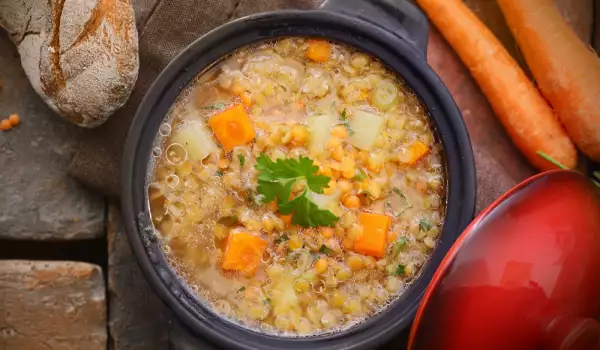
Cooking red lentils
Red lentils are a way to enrich and diversify the menu, being also suitable for a sensitive stomach.
12-15 minutes are enough for the red lentils to boil.
You can make a salad with them, flavored with lemon juice or another source of vitamin C, to make it easier to absorb the iron they contains.
Fancy Lentil Salad Recipe is French - Red Lentil Salad, Cucumber and Avocado.
Dips and lentil stews are very widely used, because of the variety's ability to boil quickly.
Red lentil patties are a classic, as well as lentil stews and pates.
And for lovers of more exotic options, there is the recipe with red lentils and shiitake mushrooms.
Naturally, lentil soup remains emblematic of the culinary use of red lentils and its oriental-style cream soup will be a valuable idea for another addition to the menu.
Oriental red lentil cream soup
Products required:
- 100 g of red lentils
- 1/4 onion
- 1 carrot
- 1 clove of garlic
- 5-6 grains of black pepper
- 1/2 teaspoon of turmeric
- 1/3 teaspoon of ginger
- 3-4 grains of pepper
- 3 tablespoons of olive oil
- 3 tablespoons of lemon juice
- salt - by taste
- water to meet personal soup consistency requirements
Method of preparation:
The lentils are soaked for just a quarter of an hour and then washed. Boil them on low heat for a quarter of an hour. The vegetables are cooked separately. All ingredients are grinded in a blender, until a smooth soup is obtained, without large pieces.
Lovers of an exotic taste can add coconut milk for cooking or the meat of a coconut.
Between 3 and 5 servings are made, depending on the amount of water added.
This soup is not only pleasant and light in taste, but also very nutritious. It contains 560 calories, 30 g of protein, 40 g of fat and 75 g of carbohydrates, which you can share with family or company. Each portion of lentils loads the body with useful substances and can support the process of treatment or recovery after illness.
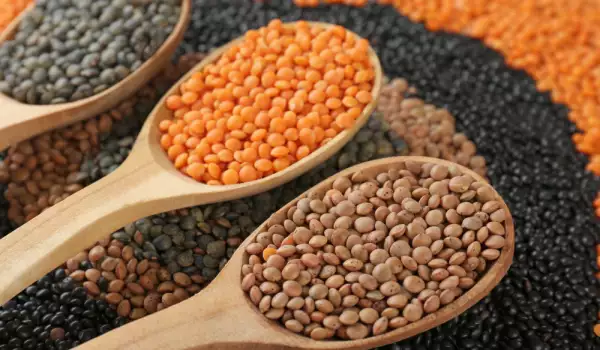
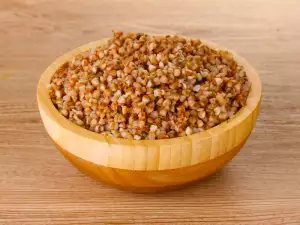



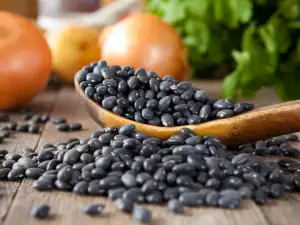


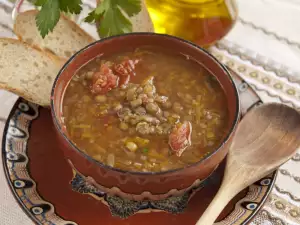

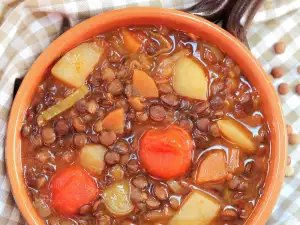









Comments